#if this was intentional I revoke every single criticism I have and ever will make about this series
Explore tagged Tumblr posts
Link
The Times They Showed Their Quality: My own experience with Liberty University’s treatment of faculty BRIAN MELTON·MONDAY, JUNE 24, 2019 Clarification: This note was written in direct response to comments from Liberty’s provost in a recent Christianity Today article claiming that the relationship between the LU administration and its faculty staff is “healthy”, and that the faculty is “completely comfortable with what [the administration] is doing,” and it should be read in that context. I offer this as a simple statement of my experience to serve as a corrective in honor of the many people whom I know wish they could speak out but can’t. Thanks in advance for taking this as nothing more or less than it claims to be. --Brian Anyone who is paying attention to criticisms of Liberty University these days is well familiar with the charge of “Fake News.” It is a common and mindless refrain, parroted back in obedience to The Donald’s talking points and it somehow resonates with otherwise intelligent people. It is also an easy charge to levy, as most of the time when people not connected to LU hear about nefarious happenings and underhanded actions, it is as “something that happened to this guy I heard about” or the like thanks to LU’s use of non-disclosure agreements. I never signed an NDA. So, I thought I might skip the rumor mill and share my own direct, first-hand experience with the administration’s behavior. What I can attest to is only the tip of the proverbial iceberg and not as bad as what has happened to others, but it marked the transition when, after fifteen years, I finally came to the definite conclusion that the upper administration at LU wasn’t simply self-serving or even inept, but fundamentally duplicitous. Worse, it demonstrated to me that they acted this way intentionally and with malice aforethought.
In 2014 my family and I moved back to the Lynchburg area, where I occupied a position as an Instructional Mentor, acting as a bridge between the College of General Studies and the College of Arts and Sciences. Previously, I had worked for LU full time residentially for over ten years. I served as a professor, chair of the curriculum committee, and moderator of the faculty senate during that time. I liked and respected (I still do) the people in those schools I worked with directly, and at the time we intended to spend the rest of our lives there. I figured whatever else happened, we would muddle through it and I would retire from LU when the time came. My point is that though I of course had my frustrations with the administration on some issues, but there was no ill will and I hoped to keep working for them for years to come.
One peculiarity of my position at the time was that it was “part-time full time.” Technically, I was a part time worker and I received none of the benefits that other faculty did, while at the same time I was counted as a “full time” faculty with a terminal degree for SACS purposes via a “limited benefit” contract (the sole “benefit” was that after filling out paperwork I could receive up to $400 a year to join professional associations). I knew there would be none of the standard health or life insurance, tuition assistance, etc. going into the position and was fine with it, as we were allowed to take extra classes and make a comfortable sum that allowed me to pay for all the extras out of pocket. I recall speaking with my associate dean as late as 2015 and telling him that I would be happy doing this job until I retired.
Of course, the lack of medical coverage in particular was a complaint that many had, but I did not see it as a significant obstacle. Yes, it was on the unfair side to be a second-class faculty member who did not get the coverage others did, even though I did as much work, and getting on the school insurance would be a significant boon to our family. Still, I worked from home, was paid well, and just accepted it as a known downside of the specific job I had agreed to do. There had been constant rumors that the administration appreciated us and was taking steps to give us coverage, but nothing ever came of it. Until the Fall of 2016, that is.
That fall I received an email on a Friday afternoon (when few people would be expected to look at it, of course) informing me that I had worked enough to qualify for medical coverage under the university. I had one week to respond. If I didn’t I would immediately and permanently forfeit any claim to coverage now or in the future. As you can imagine, I didn’t wait! I responded immediately that I was grateful for the opportunity and to put me down for it. I also contacted both of my bosses, who were happy to hear that I had received coverage. Both promised to do everything they could do to make sure I kept it by giving me the required amount of work.The next week I called Human Resources to find out more. I spoke with the benefits coordinator, and told him how much I appreciated the gesture. He replied that he was glad to hear it and that LU was always happy to help its people. As he explained the details of the coverage, he was careful to sneak in a comment that if I ever happened to fall below the required line, I would lose my coverage. “Well,” I thought, “that’s fair.” And so I asked what I thought would be the obvious question: “Where is the line? How much do I have to work in order to rate coverage?” His reply was shady, and you could tell by the uncomfortable tone of his voice that he knew it too. “That’s proprietary information,” he said, “I can’t release it.” “You can’t tell me at all?” I asked. “No” was the answer. My bosses, good people that they are, also both followed up with HR and they were both given the same answer.
From that moment, I knew that this was, in reality, nothing but an intentional set up. The reason they would tell no one where the line lay was because it was mobile--no one would ever cross it again. No matter how much we worked, it would always be “unfortunately” short of the goal. In fact, Liberty had obfuscated on Obamacare as long as they could, and now they were being forced to offer coverage to all full time workers. Rather than be frank about it, they were playing the situation off like this was a friendly and helpful boon to their employees, all the while laying plans to revoke the coverage at the first opportunity and blame it on said employees. It was as dishonest as it was obvious.
Sure enough, within a month, we began to get notifications of sudden “policy changes” that cut the financial rug out from under whole classes of faithful employees. My own turn at this came in December. In a move worthy of the counting house of Ebenezer Scrooge, four days before Christmas, I received an email informing me that I was to be locked out of any and all overload teaching effective January 1. For me, that amounted to an immediate pay cut of approximately a third of my yearly LU income. I was given approximately two weeks--including Christmas Eve and Day--to make adjustments. Never was an apology expressed, regrets offered, or even an acknowledgment made by anyone beyond my immediate superiors (who had no say in the matter) for the obvious effect this had on people’s lives or for the manner in which it was rolled out. Over the next quarter, chaos ensued as the administration waffled back and forth about what to do next and my hapless bosses could only report what the whim of the day happened to be. One day I was looking at a 50% pay cut. A week later, the rumor was that my position was being eliminated. A week after that, it was 20%. Then 30%. etc. etc. etc.The following Fall, things finally settled out--as much as they do at Liberty, where things are constantly in flux as the latest disposable “rock star” tries to leave his mark. I ended up losing about 25% of my previous income potential and we were limited to a theoretical 30 hours per week of work. I emphasize “theoretical” because in fact no effort was made to track anything outside of teaching hours, which represented the hours for which we were actually paid. At the same time, Liberty’s “Co-Provost” announced sweeping changes to our positions requiring substantially more administrative work. Since administrative hours were never counted or totaled nor paid individually, in fact our workload as a whole went up substantially while our overall pay potential dropped significantly. Perhaps worse, we were now charged with tracing faculty compliance via a tool called the “FAR” which tracked and logged every single time a faculty member was late doing anything. While that information had been available to chairs and deans for years, now it was forced down to even the adjunct level and I, as an Instructional Mentor, was required to contact the faculty under me and ask for an explanation any and every time I saw a “red flag.” Miss posting your Monday announcement by five minutes this week? I have to demand a justification that I would log with the university on your record. Are you a little late in grading the papers the university suddenly required you to return to the students two days earlier than before? I’ll be checking up on you for an excuse why you shouldn’t be fired. And with the “Co-Provost” (What the heck is that, anyway? The real provost pretending to not be? The actual provost’s personal assistant?) constantly haranguing us with threats that there were “hundreds of people lined up for your job”, threats so thinly veiled that they insulted your intelligence as much as they frightened you, there was plenty of angst to go around.And so I found myself in an interesting position: I was working full time hours at a part time job that had at least full time expectations, being told that I could get in trouble if I didn’t accomplish my full time work in my part time hours. I operated on a one year contract with no job security under implied threats of “non-renewal” delivered via smarmy video messages that tracked how much of each you watched. I was part of an increasingly Orwellian surveillance system that meant I was party to inflicting all of this onto others. (Let us not forget academic standards that had fallen dramatically over recent years and about which I could perhaps write another whole article.) And I was supposed to be happy about it--sacrificing my time and my family for the university, but not being able to expect a scrap of loyalty or genuine appreciation out of anyone above the deans’ level in return. The only safe words that could be used to express serious dissent were, “Thank you sir! May I have another?” All of this was happening in the name of Christ, and every complaint was expected to be excused for the sake of the mission, a mission that it was increasingly clear the school’s own president regarded as secondary to making money and winning football games (since confirmed directly in a recent tweet). It should come as no surprise, then, that in the summer of 2017, when I was approached about an opportunity to teach in Europe, I decided to leave. And the medical coverage? In September of 2017 I received the equivalent of a medical “Dear John” letter, regretfully informing me that since I simply hadn’t worked hard enough in the past year, the university had no choice but to end my medical coverage. At the time, my wife and I were actively being treated with expensive anti-biotics for Lyme Disease and a malarial-type infection she had picked up on a mission trip. My new chair in LUO (my previous one had quit in disgust) went on the line for me to try to reverse the decision, but was told to sit down and be quiet--the administration didn’t care and he was risking his own position by speaking up. In the final tally, I most likely could have made ends meet on the new salary they were offering, but money wasn’t the central problem. Neither was the still-absent medical coverage; we had lived without it before and could again. The most important issue for me was character. I had to be able to rely on Liberty University to treat me and others fairly and honestly if I were to bank my family’s welfare on working for them. My own personal narrative aside, I knew of many other people treated worse than I was--a whole list of persons I liked and respected. If the last few years had taught me anything, it was that while there are still many excellent people to be found there, Liberty University as a whole was as shifty, dishonorable, unprincipled, and hypocritical a work environment as could be offered. I could not trust my family to them, and I increasingly found it hard to have my reputation associated with an organization that had proved itself so often without honor. (Yes, I’m old fashioned that way.) It was a hard decision. We love our friends in the Lynchburg area very much and we love the Virginia mountains. We love our church, and, as I said, we planned to grow old and die there. We miss them all badly, even as we travel and experience Europe. Unfortunately, Liberty’s behavior and lack of honor made it virtually impossible to stay--for us at least.
Moving into 2018, I learned that more cuts were likely. (Despite what Provost Hicks asserts, it is a relatively recent thing for faculty to be completely surprised by their non-renewal. At one point there was a written agreement that faculty would be notified by January if it were a possibility, and even later people were unofficially informed.) I approached my bosses and let them know I would be leaving at the end of the year in the hopes that if they knew it, someone else’s job might be secure (I was told that it did save a position). In true LU style, I later received official notification in a boiler plate email that they had regretfully decided not to renew the contract I had already informed them I wasn’t seeking. I arrived at LU in the Fall of 2003 to find an earnest, if humanly fallible university making its very best effort to transform itself into the Notre Dame of Evangelicalism. I left a financially successful behemoth where real ministry and Christian charity is carried out by earnest believers in spite of the effort and example of its upper administration to the contrary. Increasingly, LU is becoming more the Harvard of Evangelicalism than the Notre Dame (academic standards definitely not withstanding). It is a university where the original mission has been sacrificed in favor of a political agenda and a secular system of situational morality, Liberty falling to the right wing in counterpoint to Harvard’s left. Though the campus may be bigger and more beautiful than ever before, sadly, thanks to the trajectory of its current administration, its reflection of Christ is not.
1 note
·
View note
Text
Evolution of Disney Princesses theory
Guess who’s back with another theory? Me! How did you know? Anyways, I’m going to be taking a break with my Harry Potter theories and venture out to one my childhood's fondest memories. Yes, Disney. More specifically, Disney Princesses.
Like every single living organism on this planet, everyone (even your beloved film characters and TV series) goes through a form of evolution. In this theory, I am going to be talking about the “Evolution of Disney Princesses” and how they adapt to our ideas of what a Disney Princess should be.
But before we get into all of that, we need to answer: how does one become a Disney Princess?
Simple, really. (sarcasm).
Each Official Disney Princess must meet the following requirements: A) has a primary role in a Disney animated feature film, B) is human or mostly human-like (e.g. Ariel), and C) does not appear primarily in a sequel. The actual title of Princess (or equivalent) is not necessary but certainly, helps.
Then, if they pass the requirements above: there’s more! Whereas the first set of requirements required you to meet all three, in part b) you only have to meet one of these criteria. A) You have to be born royal or B) you must be born royal or C) perform a significant act of heroism.
Then, the final test. The unspoken rule. Box office revenue.

As of 2017, the eleven characters considered part of the franchise are Snow White, Cinderella, Aurora, Ariel, Belle, Jasmine, Pocahontas, Mulan, Tiana, Rapunzel and Merida.
Fun Fact: Tinkerbell was revoked of her Disney Princess membership.
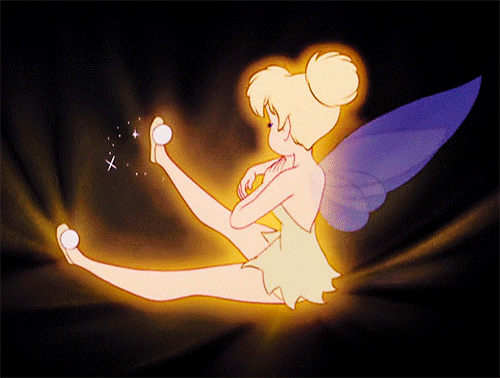
Disney Princesses are a massive thing for every young girl. They are role models for the next generation and as generations and generations pass, the ideas of roles of a Disney Princess becomes different.
Classic Era:
These are your “reactionary” princess who saw a lot of action but didn’t do much about it. They are very dependant of basically everyone else and victimised a lot - feeding into the stereotypical “women”. Granted, this was princesses that represented the era that “girls should be seen and not heard.”
Snow White
Snow White is the first and original Disney Princess. Snow White is a beautiful young princess, described by her evil stepmother's Magic Mirror as having 'hair as black as ebony, lips as red as the rose, skin as white as snow' and also dubbed by the Mirror as the 'Fairest Of Them All'. Then, somewhere along the movie, she seeks refuge in the Seven Dwarfs, eats an apple from an insecure witch and is saved with a true love’s kiss. Disney regards Snow White as kind, sweet and respectful, encouraging children to, "be a friend to all," in the same way she is depicted in the film.
Cinderella Cinderella is the second Disney Princess. She is often considered the "Leader of the Disney Princesses". Forced into servitude by her evil stepmother, Lady Tremaine, and her two cruel stepsisters, Drizella and Anastasia, after her father's death, her only source of happiness was her animal friends, which consists of birds and mice. While scrubbing the floors of her late father's mansion, an invitation to the Prince's ball is delivered, inviting all of the eligible women to attend so that he can find a wife. And, you know the story. There’s a godmother, a clock, about a dozen of songs and a glass slipper thrown into there.
Aurora Aurora is the third Disney Princess. She first appeared in Disney's 16th animated feature film Sleeping Beauty (1959). To be perfectly honest, I actually forgot what this movie was about. Blah blah, blah, a princess was born. Blah, blah, blah, the Holy Trinity appears in a fairy form. Blah, blah, blah, she gets cursed how she’s going to prick her finger on her 18th birthday. Ouch. Blah, blah, blah - she does. Blah, blah, blah, prince charming comes with a true love's kiss. Oh, what an excellent plot convenience.
Renaissance era:
Then, Disney introduced these princesses that had more independence, more complexity and depth in their character - challenging social norms (well done for being bold Disney.) Sure, they still had their critics but not as much as the classic eras.
Arial:
Mermaid. Sees the human world. Trades for voice to an octopus in order to experience the human world. There’s a prince in there sure but still, we see a more feisty and independent woman who wants to take charge of her own fate. You go, Arial!
Belle:
Everyone knows her. Her story can be best summed up by this mantra - “don’t judge a book by its cover.” Pretty sure there’s a handsome beast in there (who she helps saves), talking objects and Emma Watson thrown in there. But really, Belle is an independent, intelligent, headstrong and courageous princess - again challenging society and social norms.
Jasmine:
There’s a genie. Three wishes. A castle. The songs are amazing. Jasmine, despite she’s so independent and headstrong still has red flash marks as she “seduced” the villain or something and still depends on a man. Though on the positive side, she does challenge authority. Actually, her dad. Actually, that might not be a good message to parents after all. Oh well, still a great fairy-tale from Disney.
Pocahontas:
If you ever want to see an inaccurate, loved-up, innocent version of racial domination, you got it in Pocahontas! But seriously, her independence and bravery need to be commended.
Mulan:
She also does not fit in with the expectations of a young Chinese girl of the time; despite her natural beauty, she is clumsy, outspoken, and independent rather than graceful, silent and demure. After her meeting with the matchmaker ended in chaos, the matchmaker claimed that even though she had the looks of a bride, she would never find a match. However, her courage, intelligence, and determination helped her through her adventures, in which she disguises herself as a male soldier in order to fight in the Chinese army in place of her wounded father.
Modern Era:
Get ready to see a storm of feisty and confident princesses who actually kick-ass!
Tiana:
Tiana offers a new perspective as simply a hard-working woman who bears no reliance on a man. She gets turned into a frog. Then becomes a human again. She then fulfills her dream to open a restaurant. She also does marry a prince but that’s not her intention in this movie - marrying a prince for her was just a “bonus.”
Rapunzel:
A princess. Long, blonde hair. Teams up with a thief called Flynn and go on a magical journey to see the lanterns and to escape the tower that her stepmother forces her to be in. We learn freedom.
Every girl’s dream. :)
Merida:
First Disney Princess to not have a love interest nor to sing in Brave. A huge achievement on its own from Disney. The best way of putting it: she is basically like Katniss Everdeen without actually competing in the Hunger Games and instead tries to reverse the spell that landed of her mother into a bear.
If you want to learn more about the history of Disney Princesses: I strongly recommend you to check this site :https://en.wikipedia.org/wiki/Disney_Princess in which I got a lot of this information from.
As society progresses, our ideals for a Disney Princess changes. Who knows? Maybe we will have a LGBT+ Disney Princess, a plus-sized Disney Princess or even just an ordinary person - you don’t have to be royal to be a princess. (or something corny like that.)
Additionally, from the complaints Disney got about their line-up of Disney princesses, they teamed up with Kate Moss and created a poster called “The Princess Principles.”
It’s actually quite a clever advertisement endorsement. Checkmate, Disney. But you can’t deny, the poster DOES look pretty.
It actually sorts of makes sense. I would prefer to be blunt and say “thy shall not kill” but you know, each to their own.

Edit #1 - 26/06/2017: So, I was walking and I saw this awesome display board at my college. It was basically pictures of Disney Princesses with motivational quotes such as, “off to work we go!”, “you got to dig a little deeper”, “i am not a prize to be won” to show that Disney Princesses are role-models despite their heavy criticism (as we discussed the Classic Era). I feel like the need for this display board was mainly due to geographical factors. I live in a poverty-deprived area where a small number of people go to higher education and universities and such, and so, this display board was made just to inspire us - seeing that I attend an all-girls-school. I still have multiple theories in my mind about who was responsible for this display, none of which I confirmed. Either way, I sort of love this display board and the idea behind this was pretty damn cool.
MY FRIEND: What are you doing?
ME: Can you move?
MY FRIEND: Why?
ME: I’m trying to take a picture of a Tumblr post.
MY FRIEND: What’s Tumblr?
Me: *sighs*

Avoir un lieu magique et une journée incroyable!
-sexierthanaheartburn
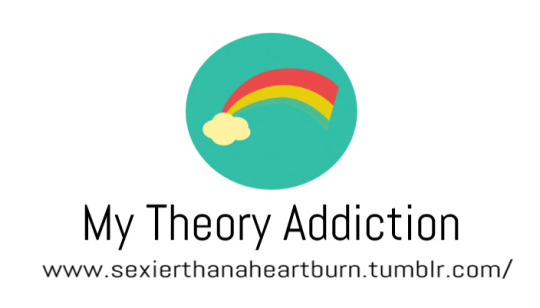
#disney#princess#theory#cinderella#belle#snow white#aurora#beauty and the beast#mulan#tiana#repunzel#tangeld#jasmine#aladin#merida#brave#kate moss#pocahontas#follow#instant folllow back
15 notes
·
View notes
Text
Portland's mayor took a stand against hate, but the ACLU is pushing back. Here's why.
[ad_1]
You won't be able to defeat despise with censorship, but that doesn't mean it has to acquire.
On May possibly 26, 35-calendar year-old Jeremy Joseph Christian allegedly stabbed a few men on board a Portland light-rail teach right after they attempted to intervene on behalf of a Muslim lady who Christian was verbally harassing.
Two of individuals men, Taliesin Myrddin Namkai-Meche and Ricky Best, died when a 3rd, Micah Fletcher, survived.
Photos of Taliesin Myrddin Namkai-Meche and Ricky Best in a memorial established up in Portland. Image by Alex Milan Tracy/AP Images.
Three days right after the incident, Portland Mayor Ted Wheeler weighed in with an crucial message for his town.
In the message, posted to his Facebook site, Wheeler calls on the federal government to revoke the permit granted to an "alt-ideal" group hosting an party in Portland's Shrunk Plaza in June.
He also appeals to the organizers of the white supremacist group to cancel the planned demonstration. "There is never ever a position for bigotry or hatred in our group, and specially not now," Wheeler wrote.
"I am contacting on every single elected chief in Oregon, every single authorized agency, every single stage of regulation enforcement to stand with me in blocking one more tragedy."
Here's the full text of Wheeler's write-up:
"On Friday a few men Rick Best, Taliesin Myrddin Namkai-Meche, and Micah Fletcher stood up towards bigotry and hatred. Two paid out with their lives. A 3rd was very seriously injured.
Our group remains in shock and mourning. But we are also enormously grateful to our heroes and their family members for their selflessness and heroism. They will serve to inspire us to be the loving, courageous people today we are intended to be.
As Mayor, I required to update you on a couple developments:
1) I have attained out to all of the victims and their family members, which include the two women of all ages who have been terrorized and subjected to this sort of hatred and bigotry. I have offered my unconditional guidance and guidance, day or night.
2) I have confirmed that the Town of Portland has NOT and will not situation any permits for the alt ideal activities scheduled on June 4th or June 10th. The Federal government controls permitting for Shrunk Plaza, and it is my knowledge that they have issued a permit for the party on June 4th."
three) I am contacting on the federal government to Promptly REVOKE the permit(s) they have issued for the June 4th party and to not situation a permit for June 10th. Our Town is in mourning, our community’s anger is true, and the timing and matter of these activities can only exacerbate an already challenging predicament.
four) I am interesting to the organizers of the alt-ideal demonstrations to Terminate the activities they have scheduled on June 4th and June 10th. I urge them to request their supporters to continue to be away from Portland. There is never ever a position for bigotry or hatred in our group, and specially not now.
five) I am contacting on every single elected chief in Oregon, every single authorized agency, every single stage of regulation enforcement to stand with me in blocking one more tragedy.
six) When and if the time is ideal for them, I would like to function with the family members to come across an correct way to completely keep in mind their sacrifice and honor their braveness. Their heroism is now component of the legacy of this good town and I want long run generations to keep in mind what took place in this article, and why, so that it may possibly serve to equally eradicate hatred and inspire long run generations to stand up for the ideal values like Rick, Taliesin, and Micah did past 7 days."
The ACLU of Oregon, even so, doesn't agree with Wheeler, declaring that what he recommended is a form of censorship.
In a reaction on their have Facebook site, the firm explained (emphasis added):
"Our hearts are damaged, but government censorship is not the respond to. The government cannot revoke or deny a permit based on the viewpoint of the demonstrators. Interval.
It may perhaps be tempting to shut down speech we disagree with, but at the time we enable the government to choose what we can say, see, or listen to, or who we can assemble with, heritage demonstrates us that the most marginalized will be disproportionately censored and punished for unpopular speech.
We are all no cost to reject and protest suggestions we you should not agree with. That is a main, fundamental freedom of the United States. If we enable the government to shut down speech for some, we all will shell out the selling price down the line. We need to protect the Structure, even when it is unpleasant.
If the government has concrete proof of an imminent menace they can and should deal with it without the need of proscribing Initial Modification rights of other people."
The factor is ... equally Wheeler and the ACLU of Oregon are ideal in distinctive strategies.
So where does that leave us?
At his arraignment, Christian shouted, "Absolutely free speech or die. Get out if you you should not like no cost speech ... you simply call it terrorism, I simply call it patriotism ... die." Image by Beth Nakamura/The Oregonian/OregonLive.
Like a ton of matters in life, it's a little bit nuanced.
Right before you hop on #TeamTed or #TeamACLU, it's crucial to admit that fairly substantially everyone involved in this has very good intentions, is disgusted by Christian's actions, and doesn't want just about anything like it to come about ever all over again.
On just one hand, you can absolutely see where Wheeler is coming from. With tensions functioning high and the truth that Christian had just a short while ago attended a comparable rally, it helps make ideal perception that his impulse would be to shut down approaching rallies for worry of provoking or inspiring one more assault. With the town even now mourning this reduction, it's easy to understand that he'd look for strategies to de-escalate the predicament even so he can and send out a strong message towards despise and bigotry.
On the other, the ACLU is entirely ideal when it states the government won't be able to just revoke permits due to the fact of someone's political views. Responding to a comment on Facebook, the firm recommended that the mayor just take a additional calculated tactic that doesn't violate the Structure by speaking to the groups organizing to hold rallies and asking them to reschedule in light of the latest assault. The groups you should not have to, but without the need of outlining why these rallies pose an imminent menace, that is about all Wheeler can lawfully do.
Liberty of speech, even so, does not mean speech without the need of effects.
There are moments when regulation enforcement can and should intervene to stop speech from turning into action. For this, let us look at how the ACLU responded to the 2011 shooting exterior the business office of then-Congresswoman Gabrielle Giffords (emphasis added):
"It is crucial to keep in mind that when the Initial Modification thoroughly guards our liberty to converse freely other than in the most circumscribed situations, it is not a barrier to effective regulation enforcement towards individuals moderately considered to be involved in illegal action. ... In moments like these, it is organic to look for strategies to quell our horror and worry. But it is when people today feel most susceptible that our liberties are most at hazard. Unraveling the ideas that form the main of our democracy is not the respond to."
No make a difference what someone's individual politics are, no make a difference what group they belong to, it's crucial that they're afforded that critical ideal to freedom of speech. Even so, in heated moments with heated rhetoric, we — and regulation enforcement companies — have a duty to stop that speech from boiling more than into actual physical violence.
If the groups guiding individuals approaching "alt-ideal" demonstrations want to act in very good faith, then yeah, perhaps they should imagine about canceling their demonstration in light of latest activities. Up right up until Jeremy Christian pulled out a knife, he sounded just like them. To display that they do not condone his actions — and not hazard becoming observed as "moderately considered to be involved in illegal action" and held liable should one more assault come about — canceling may possibly be in their very best interest to maintain their freedom of speech.
Regardless of whether or not these demonstrations come about, it's on the relaxation of us to not allow an ideology of despise acquire out.
We can look to the brave men who misplaced their lives to this senseless violence as an inspiration to recommit to hunting out for just one one more and standing up towards despise. That may possibly just be the very best way to honor their reminiscences.
A memorial established up in Portland shares a message of adore and hope. Image by Alex Milan Tracy by way of AP Images.
[ad_2] Supply url
from Viral News Around The World - Feed http://ift.tt/2qHPsXI via IFTTT
0 notes
Text
Dmitri Obergfell: Death of the Cool
via One Good Eye (Denver)
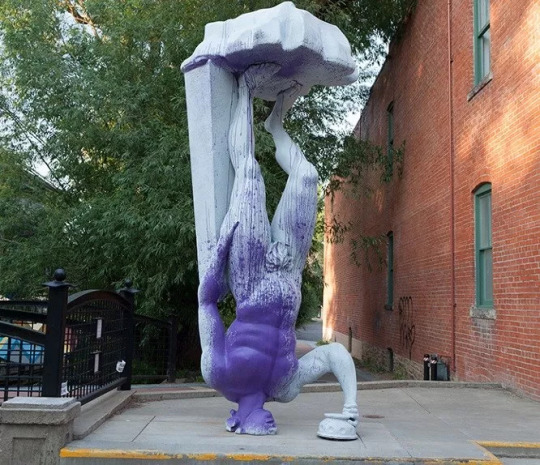
INTRO:
This is the first of a series of experimental writings about, and in collaboration with, select Denver artists. Having no specific agenda other than an interest in these artists’ work, the plan is to have a conversation with them in their studio about whatever happens to come up. There’s no Q&A, no topics to necessarily cover, and honestly, if there’s one thing I want from these experiments, it’s for them to feel different than your typical artist interview. A conversation that is true to the work and the personalities of the artists and myself.
I hope to document the personality of the conversation itself. So keeping the process organic beyond their studio and back into my own, the writing produced will inherit the thematic trajectory of the dialogue directly, with my role as writer being to subsume both peoples’ viewpoints, conclusions, questions, answers, misdirections, etc., into a single, weirdly tangential perspective.
DMITRI OBERGFELL: THE DEATH OF THE COOL

Dmitri Obergfell’s process fills the entire main space of Leisure Gallery, his current studio, in preparation for his show, Man is a Bubble and Time Is a Place, opening at Gildar Gallery March 23. Rap music from Macbook speakers echoes around our conversation. The entire time I was in there, he never paused from making molds. I started in at the natural place: What’s this show about?
Basically, it’s a meditation on “Deep Time” — an idea sampled from 2001: A Space Odyssey (the book), in which one of the most defining moments was the first time a proto-human got bored. Thus began the search for meaning, leading to the creation of symbols, the original “victory over time” that allowed information to be passed to future generations. But this sounds romantic, which isn’t the point. Dmitri is mainly just curious about what might possibly in the future be considered an artifact representative of our current era of massive overproduction.

Really, though, think about what this might be in our current, pop culture-obsessed world. The commodity of what we might call Cool? It’s certainly what’s being produced in rap and pop music, and just about every other corner of cultural industry other than art (as artists would love you to think — but really, their Cool is a commodity too, just more codified).

This has always resonated in Obergfell’s art for me, even at surface value, reflected in the chameleon paint signature to his style. The “flip paint,” as it’s sometimes known, which changes color under varying light conditions, embodies the theme of change and originally came from his fascination with car modification culture, where people have this eerily invested relationship with objects. Weirdly similar to Egyptian funerary art — some of the most extraordinary artworks ever produced, with express intent to be immediately put in the ground. I’ve personally felt for most of my life that the purpose of capital-A-Art is easiest to grasp in a sarcophagus. And I know it isn’t just Obergfell and myself who are on this wavelength: it was one of the most beautiful themes in Matthew Barney’s largely grueling film-opera, River of Fundament, screened in town as an arrival present from DAM curator Becky Hart not too long ago.
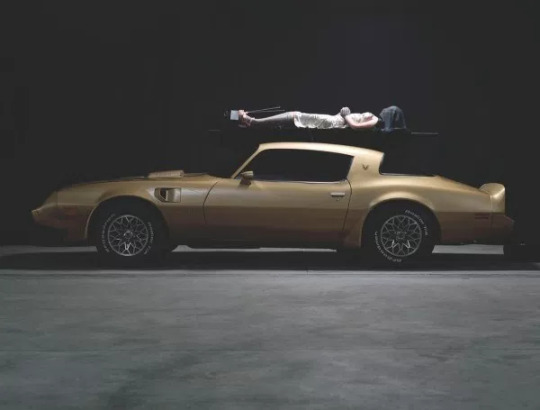
But really, for the majority of history, most art arguably had to do with some spiritual notion of death, all the way up until it made a departure from Christianity and began a slow descent into a sort of crisis as it began to become increasingly about only itself. Some might even say that modernism was a result of art becoming aware of its own mortality, with abstraction and minimalism and postmodern schools of self-referentiality becoming obsessively anxious about their encroaching deaths.
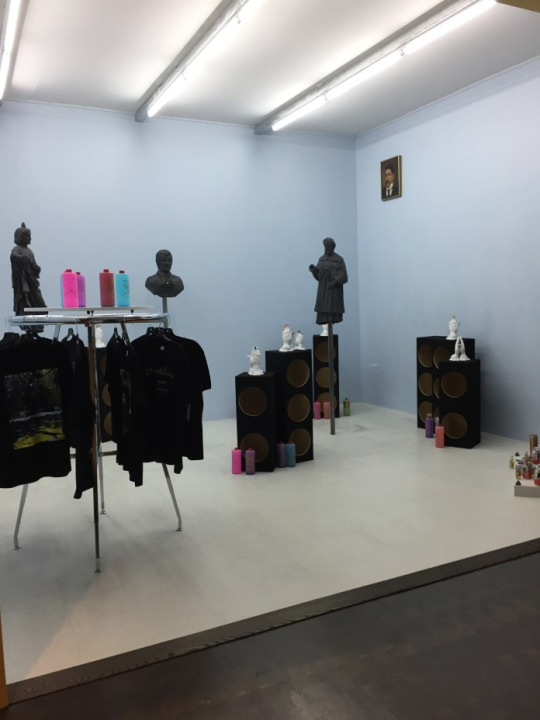
That’s a bit pessimistic, though, which is a sort of inapplicable frame for pieces like Dmitri’s recent installation featured in DAM’s Mi Tierra, which reads as not only profoundly Cool, in its chrome-plated, flip-painted, nails-did, speaker-boxed, narco-saint-swearing, tequila-shot-taking visual vocabulary, but also heartfelt, detail-oriented, and really very fresh and futuristic. Obergfell brings up Robert Smithson saying something like, “installation isn’t about filling up a room, it’s about taking things out.” This aside, though, perhaps one of the greatest strengths of this piece is that it isn’t art-about-art. It feels like it’s made for non-artists to enjoy — a product of the MTV / internet age, not just in its references, but in its attenuation to short attention spans with dozens of layered, individual moments for viewers to explore with reward at their leisure. To thumb through like the window shoppers we all are, until the museum revokes the public’s entry privileges because we can’t stop ourselves from doing so (true story).
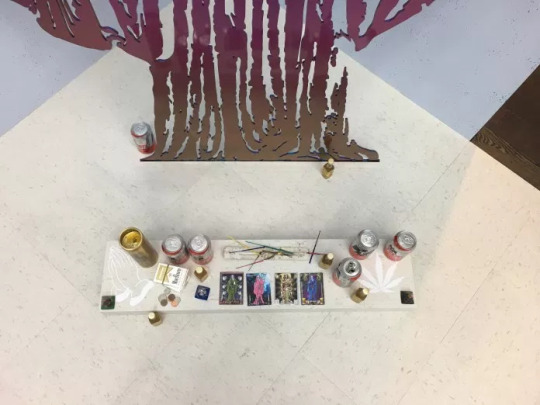
The fact that Dmitri’s works can be understood and appreciated by both artists and those who know nothing about art cannot be emphasized enough. His artworks’ brand of Cool is that of common symbology, things cool to regular people, in some ways analogous to really exceptionally-produced radio-rap. There’s a persistent legibility, even if you don’t know the prerequisite slang (artSpeak) to understand everything being said. And this is really important to him, mainly because art is in a really dangerous place in our current political climate. Much of the public may come to (if they don’t already) view being an artist as some sort of con, and regardless of any individual cases of subjective truth to that effect, it’s a fact that art is at least threatened by more forms of recreation and entertainment than ever before, constantly competing for increasingly shorter attention spans.
It’s true, sadly. The magic that often lived in art — in Stonehenge, in representational painting, in philosophical minimalism — where is it now? Because mystery, wonder, and “how the hell?” often feel like they now belong to software. And while art has always progressed in tandem with technology, is it a given that, as just one of many incarnations of information, it’s exempt from an expiration date?
This all leads me to the place where I don’t think what might be an “average” perspective on art misses the point at all. If art has this anxiety about its own death, which it compensates for by incessantly semantically proving it’s existential value in this core way, perpetuated by an industry where accumulating generations of post-Duchampian, self-proclaimed Artists successively come-of-age wanting to believe that the fortune they spent on their art-school education was worthwhile — okay, it’s a big ‘if’, but if that’s true — it kinda makes sense that artists wouldn’t want to just make “some shit that’s cool”. But whether tastes are fabricated by capitalism or not, whether that matters or not, “some cool shit” is what anyone who isn’t plagued by these anxieties wants art to be. And even just within the context of a museum visit, focusing on anything in the 21st century is like speed-dating.
Art shouldn’t be superficial. It honestly probably isn’t even art if it doesn’t get deeper and better the longer you spend with it. But it should be gratifying and appreciative of its viewership now more than ever. In a political time when it could be said that people are increasingly scared of being challenged, in all areas of their lives, whether thanks to Facebook algorithms or just some greater zeitgeist, what I’m getting at is a dangerous line of thought, for sure. But I think taking seriously people’s willingness to engage information will only benefit the future of art’s wider efficacy, and maybe ensure it even has that future in the first place. It’s important to connect to the culture you’re a part of, not just simply detach from or criticize it. Then influence is possible. Enjoyment will always be capitalized upon. That doesn’t mean it should be taken for granted.
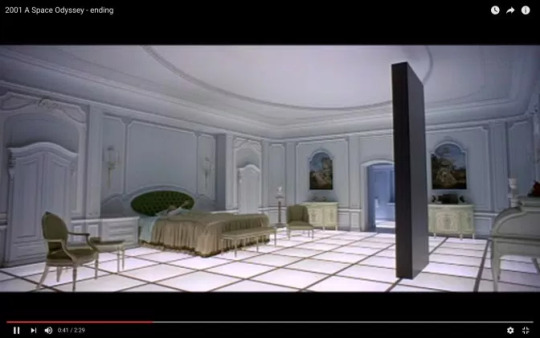
Returning to 2001 (the movie) — which anecdotally is my personal favorite work of art — no one understood this better than Stanley Kubrick. His movies are immaculately shot. Basically perfect. But if you really think about it, what he did was almost like what people now call “edutainment,” a sort of high-art sacrilege. And yet, there’s no doubt that the way he works with the “material” of film, using something shiny to draw people into his world of ideas, is tactically smart, to say the least. I personally don’t mind admitting that I love to be edutained.
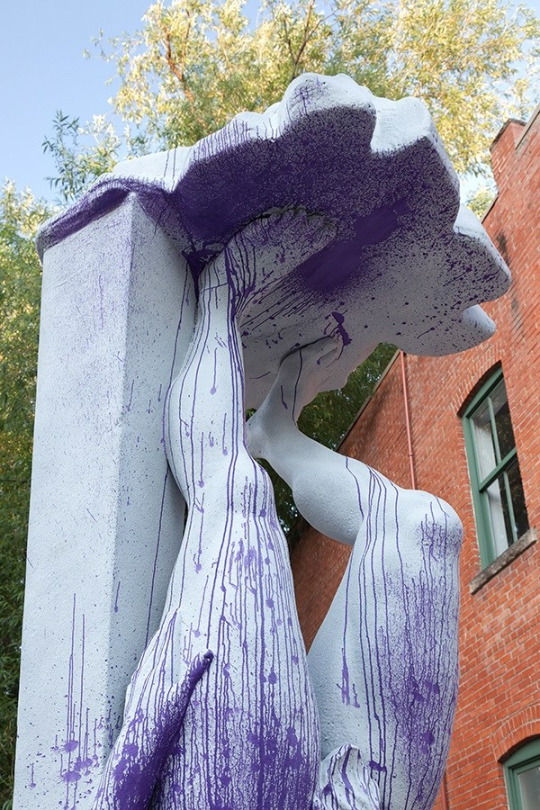
I wanted to talk about Obergfell’s sculpture at BMOCA, Go Home Bacchus, which seemed much farther down the continuum toward “critical” art, and learned that I kinda missed the mark in my interpretation. It’s not institutional critique, it’s again, a meditation. On monuments. They’re everywhere — huge, politically charged objects made by bureaucracies to celebrate victory, a kind of weird idea in the post-9/11 world, you might think, but apparently these sorts of idealistic, fascist colossuses are still a major export of North Korea for dictators worldwide. When New Orleans takes down their confederate monuments, as in current news, then how best to do that? Will they literally topple them? What an indulgent symbol…
And yet, for all this power these things are supposed to hold in the public spaces they reign over, its almost like the only way for people to react is to take a selfie in front of them, or else commit petty vandalism. It’s almost like instinctual in our culture, like it’s funny to vandalize a giant statue whether you care about the politics behind it or not.
youtube
Obergfell’s main piece of research for this project was the scene in Tim Burton’s Batman when Jack Nicholson’s Joker brings his gang in to supervillianize the art museum. “A really fucking cool scene,” representative of popular culture. But then also around that time ISIS began making headlines for destroying vast amounts of historical artifacts — horrifically seeming to say “we’re erasing your history in its most prized form, it’s gone, we own you.” So it turns out there is power in the act…
youtube
But Bacchus is about graffiti, not aesthetic genocide. But maybe not even graffiti, because that word is loaded and this has nothing to do with geometric, gradient murals. So a more slippery concept — slippery to the extent that Obergfell *might* not even be upset if someone was to tag the piece. Something racist: no-go. Some self-important graffiti writer trying to claim the piece and “get up” — get out. Junior WestSideMafia alternative school student? Go for it. The person who keeps writing “Kill Trump” on electrical boxes around Denver, please. Do your thing (endorsement is mine, not necessarily the artist’s).

Not to get redundant, but there’s something really charmingly normal about the shit-headed vibe of these sentiments, likened by Dmitri to a teenager stealing fire extinguishers to blow at cars in the parking lot for fun. And while that’s so juvenile and condemnable by the ultra-ethical art world, I know – is it not also kind of the most raw manifestation of The Artist’s Instinct, if such a thing exists? To just say “fuck it I’m gonna do this thing and see what happens”.
Why? “I just thought it’d be cool.”
#contemporary art#gildar#dmitri obergfell#installation#cool#sculpture#kubrick#deep time#graffiti#matthew barney#flip paint#chameleon paint#symbols#dam
0 notes